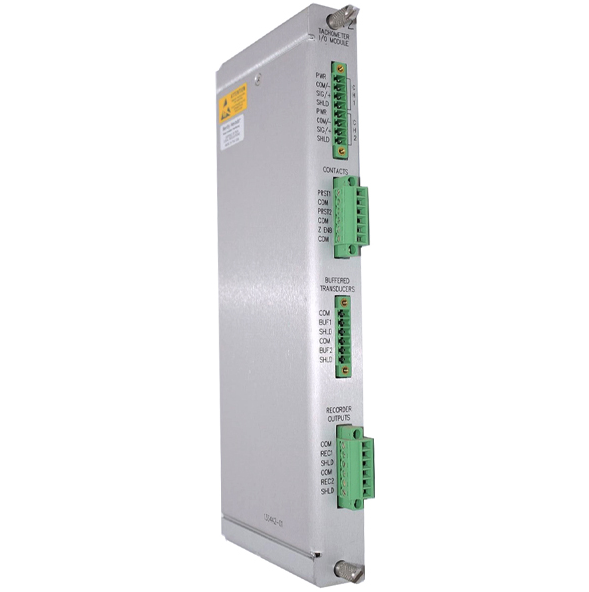
World Of Controls understands the criticality of your requirement and works towards reducing the lead time as much as possible.
133442-01 - Tachometer I/O Module with Internal Terminals is available in stock which ships the same day.
133442-01 - Tachometer I/O Module with Internal Terminals comes in UNUSED as well as REBUILT condition.
To avail our best deals for 133442-01 - Tachometer I/O Module with Internal Terminals, contact us and we will get back to you within 24 hours.
SPECIFICATIONS:
Part Number: 133442-01
Manufacturer: Bently Nevada
Series: 3500
Input impedance: 20 k Ohm
Product Type: I/O Module with Internal Terminations
Power consumption: 5.8 watts
Transducer Power Supply: 24 Vdc
VoltageCompliance: 0 to +12 Vdc
Input signal range: +10.0 V to -24.0 V
Dimensions: 241.3 mm x 24.4 mm x 241.8 mm
OperatingTemperature: -30 ºC to +65 ºC
RPM/Min Accuracy: ± 20 rpm/min
Number of channels: 12
Output Impedance: 550 Ohm
Frequency: 50 or 60 Hz
Repair: 3-7 Day
Weight: 0.20 kg
Availability: In Stock
Weight: 2 lbs
Country of Origin: United States
FUNCTIONAL DESCRIPTION:
133442-01 is a Tachometer I/O Module with Internal Terminals manufactured and designed by Bently Nevada as part of the 3500 Series used for machinery vibration monitoring systems. Each 3500/50M Tachometer Module accepts up to two transducer signals from proximity probe transducers or magnetic pickups. Signals exceeding this range are limited internally by the module. The 3500/50M Tachometer Module supports 1 to 255 events per revolution for Rotor Acceleration and Zero Speed channel types. All other channel types support 0.0039 to 255 events per revolution. All channel types support a maximum full-scale range of 99,999 rpm and a maximum input frequency of 20 kHz. The minimum input frequency for proximity transducers is 0.0167 Hz (1 rpm for 1 event per revolution). The minimum input frequency for passive magnetic pickups is 3.3 Hz.
FUNCTIONS OF I/O MODULE:
WOC maintains the largest inventory of replacement parts for Bently Nevada Monitoring systems. Additionally, we offer warranty-backed unused and rebuilt boards as well as board repairs for your damaged ones. For your OEM needs, our team of professionals is available around the clock. We at WOC are happy to help you with any needs you may have in terms of automation. Please contact our team by phone or email for pricing and availability on any components and repairs.
What is a Tachometer I/O Module used for?
A Tachometer I/O Module is used to measure and process speed or frequency signals from rotating machinery such as turbines, motors, or generators. It provides real-time data for monitoring, control, and diagnostics.
How do internal terminals benefit the module?
Internal terminals simplify wiring and installation, reduce external connection points, and enhance reliability by minimizing exposure to environmental factors like dust, moisture, or vibrations.
How does the module integrate with control systems?
It integrates seamlessly with systems like PLCs, DCS, or SCADA via compatible input/output formats and communication protocols, ensuring smooth data exchange and control.